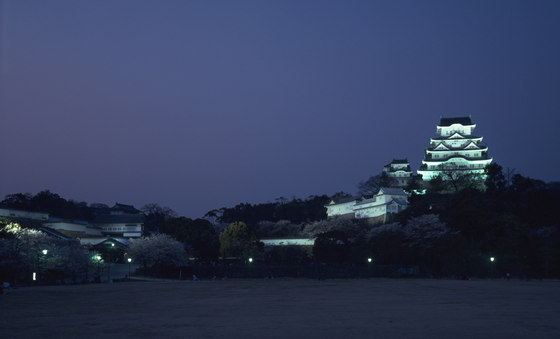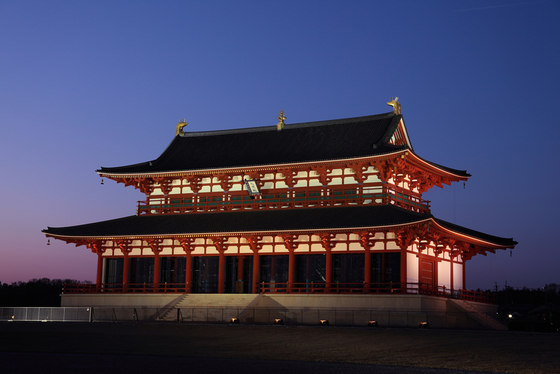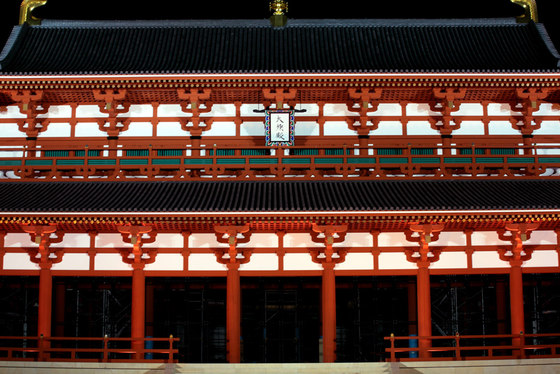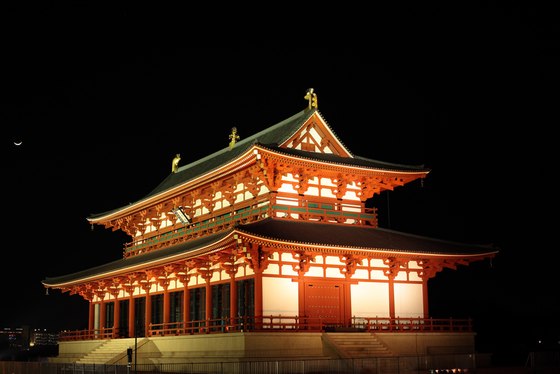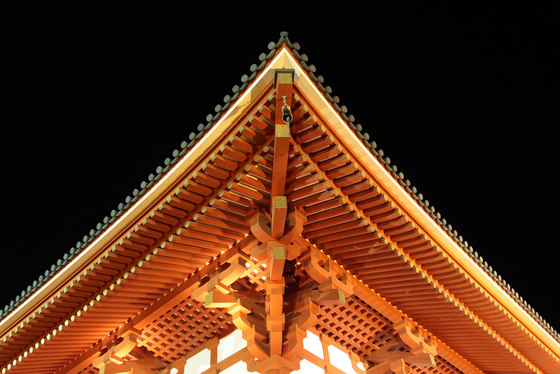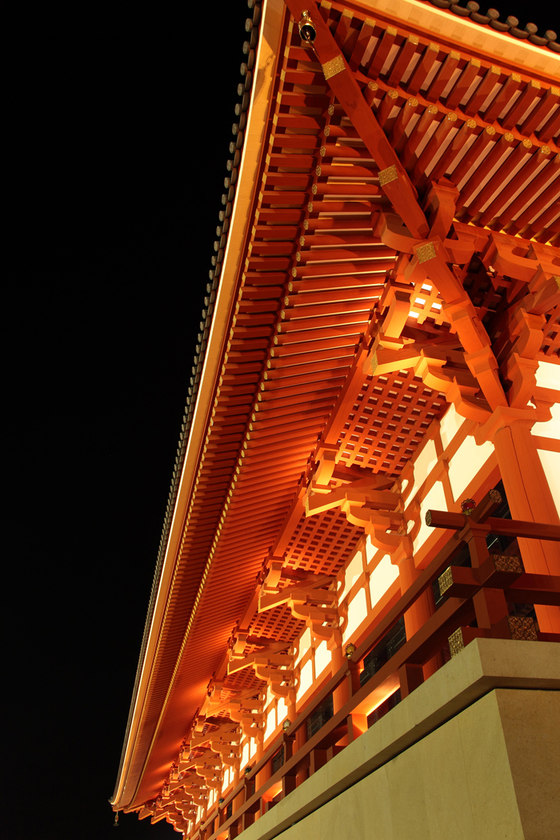The palace, reproduced in the main event area of the national park for the festival celebrating the 1,300th anniversary in 2010 of Heijokyo (the capital, Nara), is expected to remain as a landmark. For the light-up, ground lighting to enhance the vermillion color of the structure was combined with accent lighting to emphasize the characteristic eaves and capitals, ridges, and gables.
At the same time, lighting plans were considered from various points of view and care was given to maintaining continuity with the previously reproduced and lit up Suzaku-mon; to protecting drivers and the area surrounding the Heijo-kyo ruins from uncomfortable glare; and to not interfering with the daytime landscape. Installation of fittings on the structure itself was strictly prohibited, so all had to be installed on the ground or under handrails. Special covers and paint colors were used to make them unobtrusive.
As a result, the light-up brought out a beauty at night that differed from the magnifi cence and delicacy of the structure in daylight, giving visitors the feeling of actually being in the ancient capital. Consideration was given to energy conservation, running costs and maintenance in the light-up of this representative Japanese cultural asset as an example of future international light-ups.
